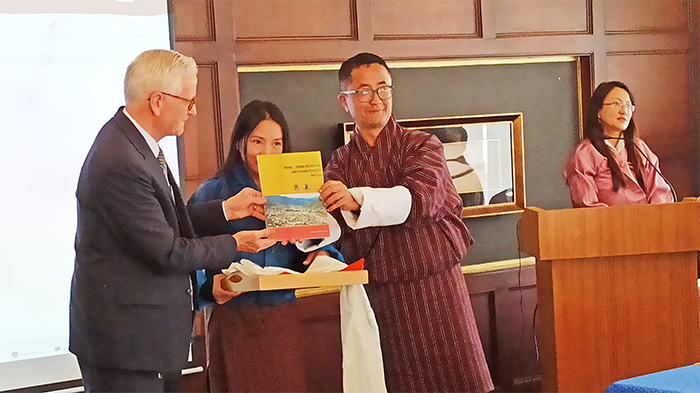Tshering Palden
Bhutan must implement policies and programmes immediately to stop and revert the migration of people, especially the young, to the western dzongkhags from other regions if all parts of the country is to benefit equally from the demographic dividends.
Researchers are worried the trend could soon become irreversible and the eastern region could tumble into further poverty.
National Statistics Bureau’s latest study shows that the western region is gaining rapidly on the population of the working-age group whereas other parts of the country, mainly eastern region, are left with more elderly people, increasing the dependency ratio.
‘Harnessing Demographic Dividend in Bhutan’ report launched last week states that there are considerable variations in the projected dependency ratios by regions: east, central and west.
Chief Statistical Officer of Social Statistics Division, Tashi Dorjee said that except for the western region, the rest of the country needs policy and other interventions if they are to gain from the spike in the country’s young population.
Bhutan would have the one time opportunity to capitalise on the increasing number of youth up to 2042.
As evident from the Population and Housing Census 2017, most of the youth have migrated from the other regions to the western parts of the country.
The NSB’s analysis results show that the dependency ratios was highest in eastern region with 70 percent in 2005 which is projected to decline to 52 percent by 2032.
“Although there is a decline, this dependency ratio is still higher than the critical point of 50 percent and is projected to increase further,” the report stated.
Similarly, the central region also had a high dependency ratio of 67 percent in 2005 which later dropped to 49 percent in 2017 and entered into a period of demographic dividend. This dependency ratio is projected to fall further to 44 percent by 2027 and will remain around that level till 2042, before it starts increasing.
“On the contrary, the western region will have the lowest dependency ratio and will therefore, have the demographic dividend period well beyond 2047,” Tashi Dorjee said.
The demographic dividend period in Bhutan has started sometimes around 2015 and will continue to have this phase till 2047 and beyond, the report stated. “However, this phenomenon may never be seen in the eastern region.”
The higher dependency ratios in eastern region is explained by NSB’s study on migration and urbanization based on 2017 PHCB data, also released last week, which indicates that internal migration is taking place from eastern to central and particularly to the western region of the country.
On the other hand, due to the working-age population moving to western and central regions of the country, the period of demographic dividend has already started in these two regions and is expected to continue to have this phase till 2047 and beyond.


